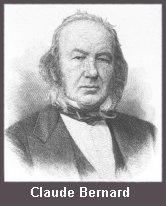Click here to go back.
THE HISTORY OF DIABETES RESEARCH
The discovery of insulin is often attributed to Canadian researchers Frederick Banting and Charles Best.
However, non-animal research had already revealed much of what was to be known about diabetes. Scientists using clinical observation and autopsy results had been developing an understanding of diabetes for centuries.
English physician Thomas Willis, as early as 1679, noted the urine of diabetics was abnormally sweet. The
presence of glucose in the urine of diabetics was proven in 1776 by another English physician, Matthew Dobson, who also found a link between this phenomena and a loss of glucose in nutrition.
Twelve years later, in 1788, Dr. Thomas Cawley noted, in autopsies, a correlation between diabetes and a damaged pancreas. In 1833 a U.S. Army surgeon, Dr. William Beaumont, observed wounded soldiers with injuries to their upper abdominal areas. Through these clinical observations he was able to describe the workings of the pancreas.
In 1869, German pathologist and biologist Paul Langerhans discovered the link between certain groupings of cells (now referred to as the islets of Langerhans) and diabetes. By 1901, Eugene Opie had shown, also without the use of animals, damage to these areas caused diabetes. Most significantly, Opie also discovered diabetes was caused by the absence of a substance produced by the islets of Langerhans—which would later be known as insulin.
With so many revelations made through non-animal research, what contribution did vivisection make to the understanding of diabetes?
French vivisector Claude Bernard, in the mid-1800’s, found that by stabbing animals in various parts of their bodies, he could sometimes cause sugar to appear in their urine. He arrived at the dramatically incorrect notion that diabetes was a ‘nervous illness’ after finding sugar in a dog’s urine after stabbing him in the spine.
In 1920, vivisector Dr. Moses Barron reconfirmed the link between the islets of Langerhans and diabetes. This discovery, however, occurred not during one of his animal experiments, but during an autopsy of a diabetic patient. Barron admitted, “I had the good fortune to encounter accidentally such a case while doing routine autopsies. The lesion by its very nature, being of long standing, presents gradually progressive changes in the parenchyma that could be obtained in no other way, not even by experimental ligation of the ducts of animals.”1
1. Dr. Moses Barron, "The relation of the islets of Langerhans to diabetes with special reference to cases of pancreatic lithiasis," Surgery, Gynecology and Obstetrics Vol.31 (November 1920): 444.








